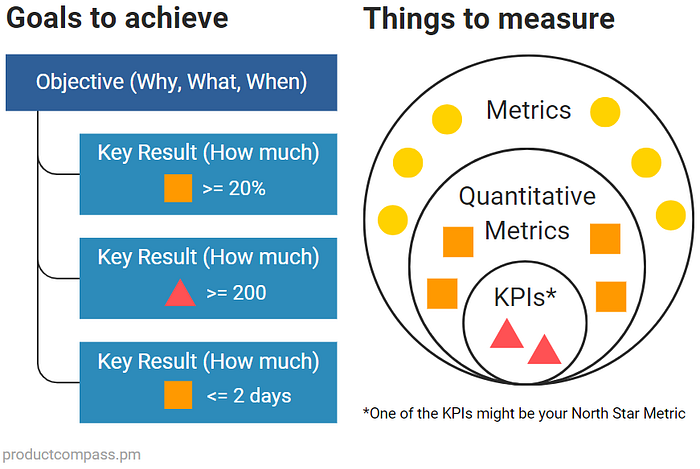Member-only story
OKRs vs KPIs: What’s the Difference?
When comparing OKRs and KPIs, many forget a critical aspect — the relationships between them.
When comparing OKRs and KPIs, many forget a critical aspect — the relationships between them.
A picture is worth a thousand words:

In short, the Key Results in the OKR always refer to quantitative metrics, some of which might be KPIs. Comparing KPIs to OKRs in the form of a table without explaining their relationship doesn’t make much sense.
Let’s dive into more details.
What are OKRs?
OKR stands for “Objectives and Key Results.” The two components:
- Objective (Why, What, When): A qualitative, inspirational, time-bound goal for a team to focus on. Typically set quarterly. It should be SMART.
- Key Results (How much): Quantitative metrics (typically 3) and their expected values to monitor the progress toward the objective.
An OKR Example:
Objective: Delight new users with the onboarding flow
Key results:
- Customer Satisfaction (CSAT) >= 75%.
- 66%+ onboardings completed within two days.
- An average Time to Value (TTV) <= 20 minutes.
OKRs are fundamentally about:
- Setting a single, inspiring goal.
- Empowering a team to determine the optimal approach to achieve it.
- Continuously monitoring the progress, learning from failures, and improving.
For more information, see (freemium): Objectives and Key Results (OKRs) 101
KPIs vs. Metrics: What’s the difference?
What’s the difference between KPIs and Metrics?
a) What are metrics?
Metrics are all the things you can measure. In particular:
- Qualitative metrics are unstructured and anecdotal.
- Quantitative metrics are the numbers.
